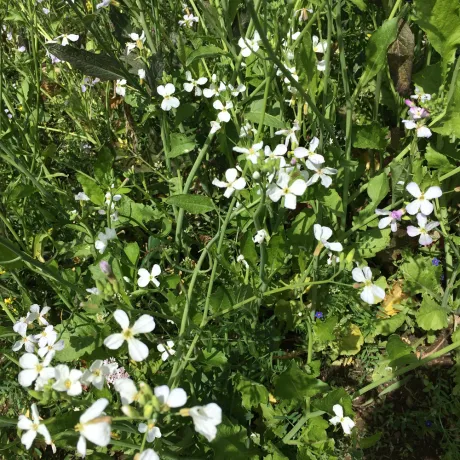According to Brihat Trayi fresh or dry roots, fresh leaves and seeds are used in different conditions. Caraka specially mentioned that tender root of radish is forebidden. Almost all the nighantus described it and is mainly used as vegetable.
Botanical Description – Annual herb, often with fleshy root; stems stout, erect, much-branched above, 3-6 dm tall; lower leaves lyrate-pinnatifid, petiolate, sparsely hirsute to glabrous, the lobes dentate or denticulate, the leaves monomorphic, reduced upward; racemes elongate; sepals erect, the lateral pair slightly saccate, sparsely hirsute to glabrous; petals purplish to nearly white, with dark purple veins, 1.5-2 cm long, unguiculate, obovate with a long narrowed claw; pedicels straight, divaricately ascending, 1-2 cm long; siliques indehiscent, cylindrical to conical, 6-10 mm in maximum diameter, tapering from above base to a narrow beak, spongy within, lower member abortive; seeds subglobose, somewhat ridged, 3-3.5 mm in diameter; cotyledons conduplicate.
Major Chemical Constituents– Seeds– (-) sufloraphene, sitosterol, stearic acid, sinapine, castasterone and brassinolide. Leaves– p-coumaric, ferulic and caffeic acids.
Part Used- Tuberous root, leaf, seeds
Dosage- Fresh juice 10-20ml; decoction 50-100 ml.




Reviews
There are no reviews yet.